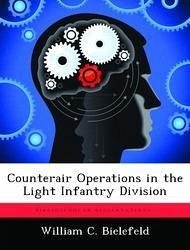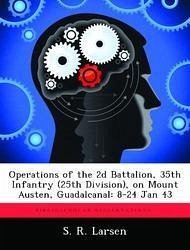
Counterair Operations in the Light Infantry Division
Versandkostenfrei!
Nicht lieferbar
This study is an analysis of the air defense posture of the light infantry division under the constraints imposed by a two Vulcan/Stinger battery air defense battalion. The potential air threat facing the light infantry division is defined, and then British counterair operations during the Falkland Islands War of 1982 are examined to gain a recent historical perspective on air defense of a light force. Air defense lessons from that conflict are used with other historical examples to suggest a concept for counterair operations in the light infantry division. The study concludes that the light i...
This study is an analysis of the air defense posture of the light infantry division under the constraints imposed by a two Vulcan/Stinger battery air defense battalion. The potential air threat facing the light infantry division is defined, and then British counterair operations during the Falkland Islands War of 1982 are examined to gain a recent historical perspective on air defense of a light force. Air defense lessons from that conflict are used with other historical examples to suggest a concept for counterair operations in the light infantry division. The study concludes that the light infantry division faces a formidable air threat across the conflict spectrum. The light infantry division can provide for an adequate air defense posture even though it has a more austere air defense artillery force structure than any other type of division. Counterair operations must be an integral part of division plans, and a combined arms responsibility. The air defense artillery battalion remains the focal point for the light infantry division's air defense. However, all the division's units must employ active and passive air defense measures to counter the enemy air threat. This work has been selected by scholars as being culturally important, and is part of the knowledge base of civilization as we know it. This work was reproduced from the original artifact, and remains as true to the original work as possible. Therefore, you will see the original copyright references, library stamps (as most of these works have been housed in our most important libraries around the world), and other notations in the work. This work is in the public domain in the United States of America, and possibly other nations. Within the United States, you may freely copy and distribute this work, as no entity (individual or corporate) has a copyright on the body of the work. As a reproduction of a historical artifact, this work may contain missing or blurred pages, poor pictures, errant marks, etc. Scholars believe, and we concur, that this work is important enough to be preserved, reproduced, and made generally available to the public. We appreciate your support of the preservation process, and thank you for being an important part of keeping this knowledge alive and relevant.













